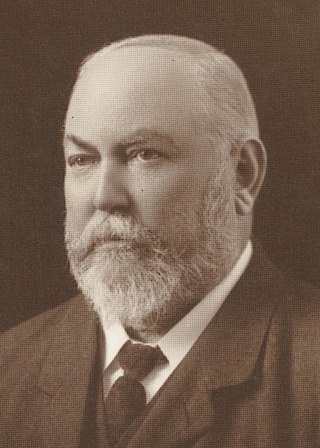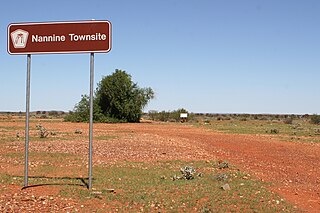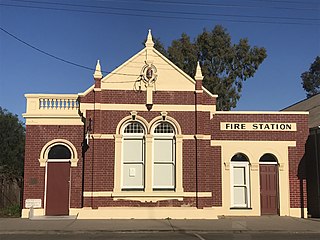
Sir John Forrest was an Australian explorer and politician. He was the first premier of Western Australia (1890–1901) and a long-serving cabinet minister in federal politics.

Kirribilli House is the secondary official residence of the prime minister of Australia. Located in the Northern Sydney suburb of Kirribilli, New South Wales, the cottage and its associated grounds are located at the far eastern end of Kirribilli Avenue. It is one of two official prime ministerial residences, the primary official residence being The Lodge in Canberra. The house, gardens and grounds are on the Commonwealth Heritage List.

Armadale is a suburb of Perth within the City of Armadale, located on the south-eastern edge of the Perth metropolitan region. The major junction of the South Western and Albany Highways, which connect Perth with the South West and Great Southern regions of Western Australia respectively, is located within the suburb. It is also the terminus of the Armadale railway line, one of five major railway lines to service Perth.

Busselton is a city in the South West region of the state of Western Australia approximately 220 km (140 mi) south-west of Perth. Busselton has a long history as a popular holiday destination for Western Australians; however, the closure of the Busselton Port in 1972 and the contemporaneous establishment of the nearby Margaret River wine region have seen tourism become the dominant source of investment and development, supplemented by services and retail. The city is best known for the Busselton Jetty, the longest wooden jetty in the Southern Hemisphere.

York is the oldest inland town in Western Australia, situated on the Avon River, 97 kilometres (60 mi) east of Perth in the Wheatbelt, on Ballardong Nyoongar land, and is the seat of the Shire of York.

Boyup Brook is a town in the south-west of Western Australia, 269 kilometres (167 mi) south-southeast of Perth and 31 kilometres (19 mi) northeast of Bridgetown. The town lies on Kaniyang land within the Noongar nation.

Newstead House is Brisbane's oldest surviving residence and is located on the Breakfast Creek bank of the Brisbane River, in the northern Brisbane suburb of Newstead, in Queensland, Australia. Built as a small cottage in the Colonial-Georgian style in 1846, the cottage was extended and today is painted and furnished in a late Victorian style.
James John Henry Hislop was a convict transported to Western Australia. After the expiry of his sentence, he became the first ex-convict in Western Australia to be appointed a teacher.

Nannine is a ghost town in the Mid West region of Western Australia. It is located on the northern bank of Lake Anneen, approximately 35 kilometres (22 mi) south-southwest of Meekatharra, and 735 kilometres (457 mi) north-northeast of Perth.

Lake Clifton is a small town located on the east side of the lake of the same name in the Peel region of Western Australia just off the Old Coast Road, between Mandurah and Bunbury at the north end of the Yalgorup National Park. At the 2021 census, Lake Clifton had a population of 759.

The South Western Railway, also known as the South West Main Line, is the main railway route between Perth and Bunbury in Western Australia.

Forrest Highway is a 95-kilometre-long (59 mi) highway in Western Australia's Peel and South West regions, extending Perth's Kwinana Freeway from east of Mandurah down to Bunbury. Old Coast Road was the original Mandurah–Bunbury route, dating back to the 1840s. Part of that road, and the Australind Bypass around Australind and Eaton, were subsumed by Forrest Highway. The highway begins at Kwinana Freeway's southern terminus in Ravenswood, continues around the Peel Inlet to Lake Clifton, and heads south to finish at Bunbury's Eelup Roundabout. There are a number of at-grade intersections with minor roads in the shires of Murray, Waroona, and Harvey including Greenlands Road and Old Bunbury Road, both of which connect to South Western Highway near Pinjarra.

Cardwell Bush Telegraph is a heritage-listed former post office and now heritage centre at 53 Victoria Street, Cardwell, Cassowary Coast Region, Queensland, Australia. The Telegraph and Post Office at Cardwell was designed by Colonial Architect's Office and built in 1870 by George McCallum, making it one of the oldest buildings in North Queensland.

The Pensioner Guards were English military personnel who served on convict transportation ships en route to colonial Western Australia between 1850 and 1868, and were given employment and grants of land on arrival. Their initial employment lasted for six months, or the duration of the voyage, whichever was the longer time. After this they became "pensioners" and had to serve 12 days per year as well as whenever called upon. They paraded annually in Perth at the Pensioner Barracks. Part of their purpose was to fulfil a promise by the British government to send free settlers to the colony to dilute the convicts, and to maintain law and order in the colony.

The Federal Hotel is located at 23-25 William Street in Fremantle, Western Australia, opposite the Fremantle Town Hall.

Dinsdale's Shoe Emporium is a heritage-listed building on Avon Terrace in York, Western Australia, constructed by a former mayor.

Maitland Court House is a heritage-listed courthouse at High Street, Maitland, City of Maitland, New South Wales, Australia. It was designed by Walter Liberty Vernon and built in 1895–96. The property is owned by the Department of Justice. It was added to the New South Wales State Heritage Register on 2 April 1999.

The York Fire Station is a single-storey red brick building originally constructed for the York Municipal Council as Council Chambers in 1897, in York, Western Australia.
Amelia Matilda Richardson Pries Bunbury (1863–1956), better known as Amelia Bunbury, was a noted photographer, furniture carver, horse breeder, and botanical collector based in south-west and north-west Western Australia.

William Henry Timperley was an author, policeman and civil servant in Western Australia. He was the acting Commissioner of Western Australia Police briefly in 1871, Resident Magistrate of the Wellington Magisterial District from 1890 to 1905 and Resident Magistrate of the Blackwood and Sussex Magisterial Districts from 1903 to 1905.



















